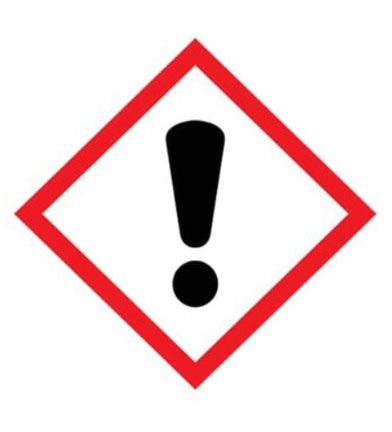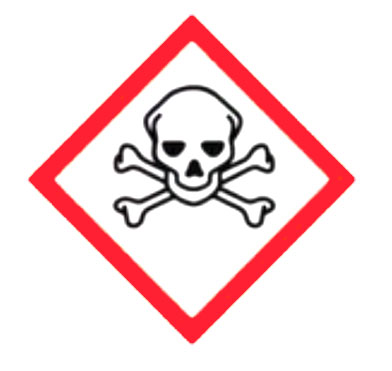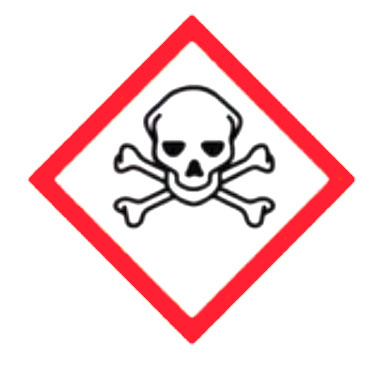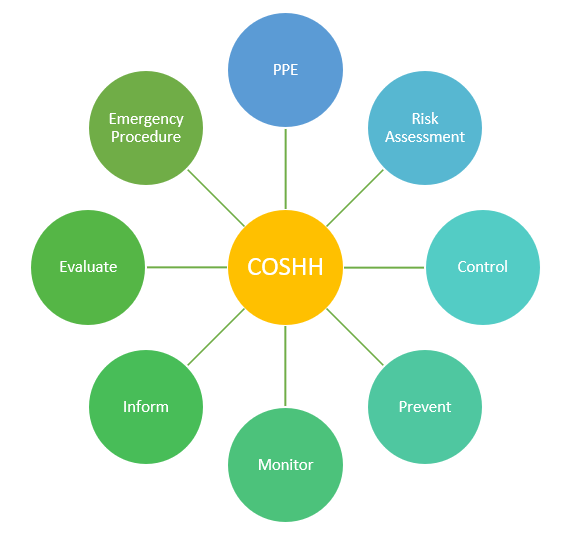This training session provides an understanding of the key issues surrounding hazardous substances and the Control of Substances Hazardous to Health Regulations 2002 (COSHH) statutory legislation. This course is designed for Health and Social Care Professionals who need to be aware of these regulations. The session will be followed by a short test.

1. What is COSHH? COSHH stands for The Control of Substances Hazardous to Health Regulations 2002. This document consists of 21 separate regulations that apply to matters regarding the control of substances in all working environments. Only some of these regulations are relevant to healthcare.
2. What is a “Hazardous Substance”? COSHH includes:
-
- Chemicals
-
- Products containing chemicals
-
- Fumes
-
- Dust
-
- Vapours
-
- Mists/gases
-
- Biological agents (germs)
-
- Asphyxiating gases
If a package has any of the following hazard symbols, it is classified as a hazardous substance:
-
- Toxic (skull and crossbones symbol)
-
- Corrosive (substance spilling on hand and surface symbol)
-
- Hazard (exclamation mark symbol)
COSHH does not cover:
-
- Lead
-
- Asbestos
-
- Radioactive substances
3. Regulation 3: Duties Under These Regulations This regulation stipulates that an employer’s duty is to follow the COSHH regulations “so far as is reasonably practicable”. The greater the risk, the more “reasonable” it is to go to substantial expense, trouble, and invention to reduce it. Ultimately, the judgment remains an objective one based on health risks and the employer’s financial position.
4. Regulation 6: Assessment of the Risk to Health Created by Work Involving Substances Hazardous to Health An employer must ensure that no employee carries out work likely to expose any employees to hazardous substances unless a suitable and sufficient assessment of the risk has been made. This assessment must determine the steps needed to meet these regulations.



The Health and Safety Executive (HSE) outlines 5 steps to a risk assessment:
-
- Identify the hazards.
-
- Decide who might be harmed and how.
-
- Evaluate the risks and decide on the precaution.
-
- Record your findings and implement them.
-
- Review your assessment and update if necessary.
The employer and Health and Safety Representatives are responsible for planning, implementing, and evaluating risk assessments. The employer is responsible for informing employees of changes to the risk assessment policy, and how these changes protect against hazardous substances. The workplace should continuously change; an unsafe element or old equipment deterioration must be reported immediately.
5. Regulation 8: Use of Control Measures Employers must implement procedures to prevent and control exposure to hazardous substances, and ensure these procedures are correctly performed by their employees. Methods to ensure control include:
-
- Ensuring Personal Protective Equipment (PPE) is compatible with other PPE items.
-
- Performing regular visual checks of the working environment.
-
- Supervising employees undertaking preventative measures.
-
- Providing additional training if employee knowledge is insufficient.
6. Regulation 9: Maintenance, Examination and Testing of Control Measures Methods of controlling exposure to hazardous substances must be maintained to a sufficient working standard at all times.
-
- All relevant equipment must be tested; the frequency depends on the nature of the control method.
-
- In hospitals, all basins must be equipped with sufficient antiseptic soap for daily checks.
-
- Ventilation services should be checked at least once a year.
-
- Records of all test procedures must be kept by the employer.
7. Regulation 11: Health Surveillance Health surveillance is the process of obtaining information about employees’ health to protect them from health risks in the workplace.
-
- Any adverse changes in a person’s health should be detected early, with appropriate and effective treatment administered.
-
- Surveillance can take the form of a regular, planned assessment of an employee’s health, such as skin condition.
-
- If an adverse change is detected, regular medical examinations are required within a 12-month interval under the supervision of a relevant doctor.
-
- Employers are also responsible for appropriate examinations and ensuring they are carried out.
-
- All surveillance records must be kept for future investigations, which aids in evaluating health hazards and preventing recurrences.
-
- All records must be readily accessible to employees.
If health surveillance reveals adverse health effects due to exposure, an appropriate course of action includes:
-
- Ensuring the employee is provided with advice regarding further health surveillance.
-
- Reviewing the workplace risk assessment.
-
- Reviewing measures taken to prevent and control exposure, changing them if necessary.
-
- Considering assigning the affected employee to a new working environment.
-
- Assessing any other employee who could have been exposed to the same hazardous substance.
8. Regulation 12: Information, Instruction and Training for Persons who may be exposed to Substances Hazardous to Health The employer must provide employees with sufficient information regarding all relevant COSHH regulations. Employers must provide information on:
-
- Details of the hazardous substances encountered.
-
- Names of substances and associated risks.
-
- Relevant occupational exposure standards, maximum exposure limits, or similar limits.
-
- Access to relevant data sheets.
-
- Other legislative provisions concerning the hazardous properties of substances.
-
- The significant findings of the workplace risk assessment.
-
- Appropriate action to combat any exposure to risk.
-
- The results of any monitored risks and the collective results of any health surveillance undertaken.
9. Regulation 13: Arrangements to Deal with Accidents, Incidents and Emergencies The workplace should be fitted with appropriate emergency response equipment to ensure that all employees are exposed to the least possible risk.
-
- Employers must mitigate the effects of an emergency and restore the situation to normality as soon as possible.
-
- Any employees affected by the situation must be informed appropriately.
-
- Specific procedures for emergencies and the equipment the workplace should contain must be followed.
Emergency procedures include:
-
- Safety drills and first-aid facilities must be established and regularly tested.
-
- Emergency procedures should detail relevant work hazards, hazard identification, and specific hazards likely to arise during an emergency.
-
- Appropriate warning and communication systems must be established to enable quick response, including remedial and rescue operations.
-
- Emergency information must be displayed in a prominent position so employees and visiting emergency services can access it.
-
- Employees must report any incident that involves the release of a biological agent or disease to their supervisor.
10. Common Hazardous Substances in Health and Social Care Common hazards include:
-
- Latex: Allergic reactions to natural rubber latex (NRL) have increased. Proteins in NRL can cause allergies through direct contact or inhalation of powder from powdered latex gloves.
-
- Medicines/pharmaceuticals: Inappropriate combinations of medicines can be harmful. Medicines should only be handled and distributed by qualified individuals. If a pharmaceutical’s identity is unknown, pass it to a pharmacist for correct handling.
-
- Glutaraldehyde: A disinfectant found in healthcare environments causing allergic reactions like respiratory problems, dermatitis, and eye irritation. It is also associated with occupational rhinitis and asthma. Handle this product with care and seek advice where necessary.
-
- Needles: Sharps which are contaminated with bodily fluids can transmit microorganisms. If they puncture the skin, contamination can occur with the contents of the syringe (e.g., cytotoxic drugs). Handle with care and always place in appropriate ‘sharps boxes’ where available.
-
- Clinical Waste: Poses a threat of infection to humans. This includes human and animal tissue, blood, other bodily fluids, excretions, swabs, dressings, syringes, needles, and other sharp instruments. It also includes drugs and other pharmaceutical products. Clinical waste must be disposed of appropriately.

Summary The COSHH regulations impose obligations on your employer who is responsible for keeping their employees safe regarding exposure to hazardous substances in the workplace. The employer has several ways to manage exposure:
-
- PPE
-
- Risk assessment
-
- Control
-
- Emergency procedures
-
- Prevent
-
- Evaluate/Revise
-
- Inform
-
- Monitor
You can help prevent exposure by being alert and around the workplace. You must report anything non-compliant with desired standards to a supervisor for correction. You have a right to work in a healthy, protected environment. It is your responsibility to follow all defined procedures in your workplace. PPE must be worn at all times and simple habits like practising personal hygiene can significantly reduce overall hazardous substance levels.
